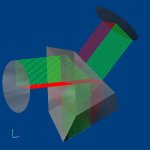Nikon says it uses this original total reflection prism in the Monarch 82ed, and somewhere I read that this system is great, but while I do enjoy the scope I do not understand this prism. Is there somewhere that I can read more about it?
Thanks.
Nikon: Nikon MONARCH FIELDSCOPE 82ED-A WITH MEP-20-60 | Nikon
Thanks.
Nikon: Nikon MONARCH FIELDSCOPE 82ED-A WITH MEP-20-60 | Nikon





